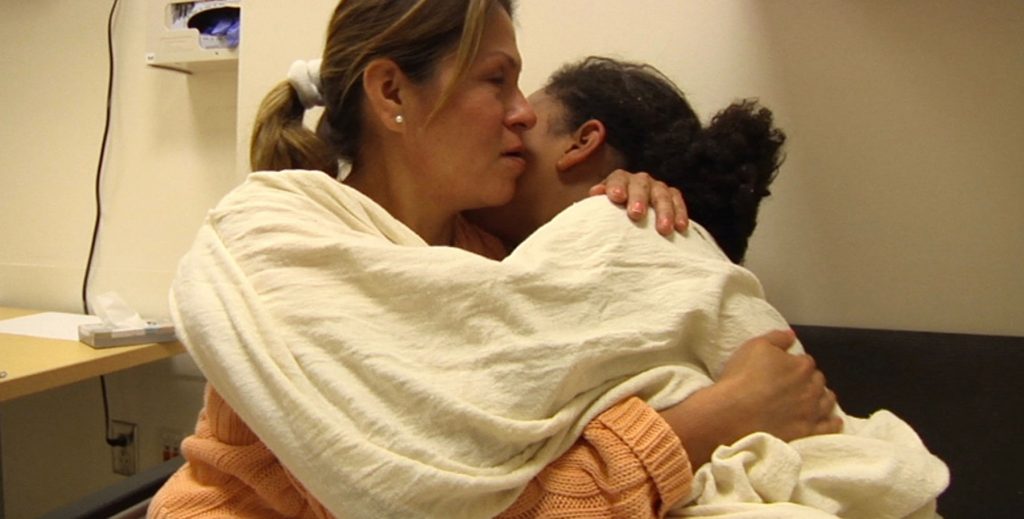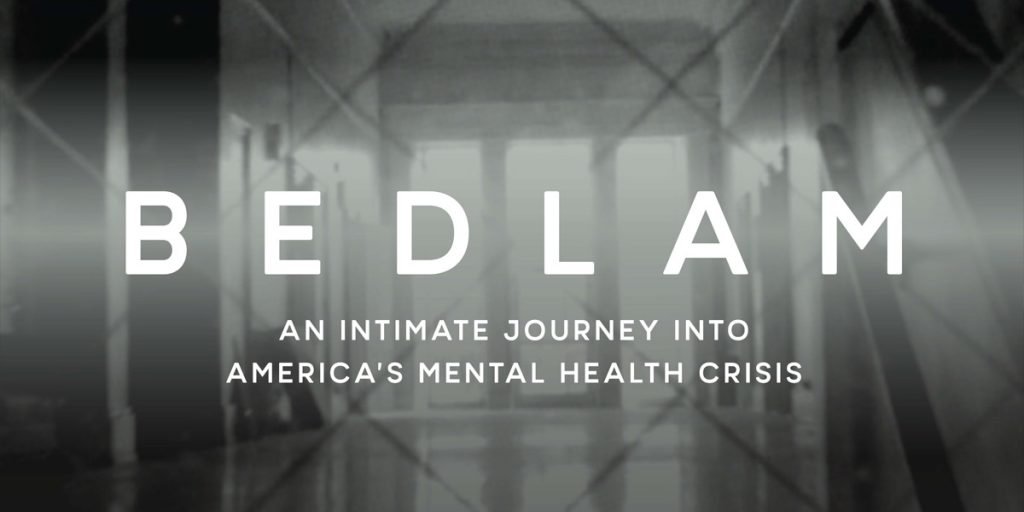Bedlam forces you to acknowledge the harrowing and insane treatment of the seriously mentally ill, chronicling years of systematic neglect and criminalisation.
Bedlam. It conjures up images of fifteenth century London. Straightjackets and torture devices sold as innovative ways to combat insanity. Electric shock therapy, insulin coma therapy, lobotomies – throughout history, society has not had the best track record when it comes to our treatment of the seriously (or come to think of it, anyone remotely seeming to be -) mentally ill. Ground-breaking documentary Bedlam premiered to standing ovations at the 2019 Sundance Film Festival. Now ready to conquer the world, it ironically does so by coinciding with another pandemic which is threatening to destabilize the US mental health system. Director Dr. Kenneth Paul Rosenberg’s astonishing snapshot of patients, families, doctors, and institutions may have taken seven years in the making, but it leaves us with an overwhelming 86 minutes of raw emotive footage. Make sure to calculate in some breaks where you can gasp for air or grab a loved one for a tight hug, as I assure you, you will need it. The US psychiatric system sure as hell is not for the fainthearted.
At the heart of Bedlam are the people who live with a serious mental illness and their family, friends, and doctors. We meet Johanna in the midst of a manic episode, and we follow her go on and off her medication, in and out of the emergency treatment room. Over the five years of filming, we see the side-effects of her medication but also a reassuringly calm and balanced young woman who fights every day to do what is right for her. We meet Todd, who has been living on the streets for ten years, and follow him through his quest for an apartment – all the while dealing with mixed manic and depressive episodes and the traumas from past hospital admissions. We encounter Delilah, a young girl with suicidal thoughts. Monte, a young man with schizophrenia, and his sister Patrisse Cullors are by far the most fierce, supportive and combative story we hear. Advocating the decriminalisation of the seriously mental ill, Patrisse founds the #BlackLivesMatter movement to support her brother and the many other black people who are treated unjustly by merciless policeman.
The documentary cycles with its main vocal points through the ups and downs of their lives and their routes through the psychiatric system. Right in that moment of absolute loss of control over the speed and intensity through which things happen, is where the documentary’s true wake-up call lies. Remember Linklater’s Fast Food Nation? Substitute the meat industry with mental health care and you get fairly close to the impact of Bedlam. Except it is indeed a documentary, and what is happening is factual and real.
In fact, Bedlam comes eerily close to a real-life horror film, where the doomsday triggering event lies not only years in the past, but is also sustained throughout years of Reagan-era policies and the focus on treating diseases which have a direct origin and cure (think of the cancer and HIV campaigns – have you ever seen a global campaign for mental health such as the ALS ice-bucket challenge? I think not). A plethora of data, from archival footage to five years of real-time filming to personal stories and interviews, are all mixed into a dizzying collage where the ability to observe bipolar or schizophrenia episodes as they happen mean more than any professional doctor can ever try to explain.

There could not be a better place to show the damaging impact of the criminalisation and de-institutionalising of the seriously mental ill than Los Angeles, California. Home to 20,000 mentally ill people living on the street, Los Angeles is also the forerunner of the largest mental institution in the United States: LA County Jail. Nowhere in the US is the lack of a social safety net so visible as in the capital of the sunny state which is mostly known for its Mediterranean climate, Hollywood and its celebrities, and its beautiful beaches. As Rosenberg told Psychiatry Advisor in an interview: “My family’s shame is America’s great secret. Fifteen million American families live with serious mental illness, and yet the resources and options for the severely mentally ill are limited and grossly inadequate. In America, the three largest providers of mental health care are our three largest jails.” Bedlam shows what inadequate funding, no transitions to care or ensuring medicine compliance has done to the mental health system in the US. If society, but also friends and family have given up on the most mentally ill, how can we expect them to not give up on themselves?
The original Bedlam hospital was designed as a house of learning, healing, and enlightenment. The burned-out doctors in LAC+USC Medical Centre show us that these are noble intentions, which quickly get crushed with the weight of a society who lacks patience and understanding to deal with something foreign and unknown to them. Over the years the term ‘bedlam’ is associated with an almost frenzied chaos and could not be a better name for a documentary that so accurately describes America’s approach to serious mental illness. As candid footage of an informal meeting between the (former) directors of the American Psychiatric Association shows, year after year the government and society have let our family and friends who most need our compassion and help down. From the beginning of the 1950s, with the defunding of dismantling of mental institutions across the US, 90% of available beds for the mentally ill have simply disappeared. With the closing of local psychiatric hospitals and clinics, the psychiatric emergency room is now the main way of treating the growing numbers of seriously mentally ill. Treated as ‘enemy combatants’, as the Monte’s sister Patrisse angrily puts it, the patients face violent cell extractions, forced medication while being tied to a hospital bed in an isolation cell, before being released again to the streets after sometimes as mere as 24 hours spend in treatment.
Bedlam challenges the notion most people have, that a mental illness can be treated and cured like a broken leg. Instead, it shows a constant stream of patients pushing their way through the revolving door of their own episodes, and the mental health system. Even-though serious mental illness affects 4% of the population, it is a profound source of misery for families the research for which is only beginning to scratch the surface. Where anxiety and depression have been thoroughly research and are making their way out of the shame and stigma, illness such as schizophrenia and serious bipolar disorder remain horribly outdated when it comes to treatment and medical knowledge. In the past 15 years, research into schizophrenia drugs have decreased and drug trails are even down 90%. The holy grail of medication for bipolar disorder is a drug developed in 1949 (Lithium) which comes with a long list of very invasive side-effects (hypothyroidism, heart failure, hand tremors to name a few). To compare with physical illnesses, the protocol for cancer is no older than 2 or 3 years.
According to Rosenberg, the vast problem of the current system (other than abject neglect) is the denial of the mental health aspects of the circumstances that effect 1 in 5 American adults – until they do something that turns them into criminals. Because, after all, criminalization and incarceration, particularly of the poor and the racially diverse, is something we know how to do really well in this country. Bedlam really manages to tackle a sensitive and often ignored topic with the grace and respect it deserves without judgingly objectifying the reality of a large part of American society. Through the stories of Johanna, Todd, Delilah and Monte, we learn that humans are at the heart of mental health. If you want to start your new year right and be more compassionate for your fellow human being, Bedlam is a great start!
Bedlam is currently available to watch on PBS, and several US virtual events are scheduled to take place throughout January 2021.

 loudandclearreviews.com
loudandclearreviews.com
